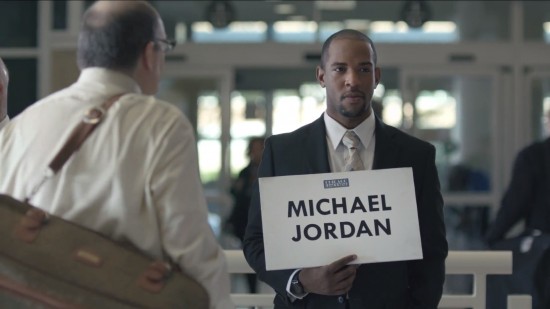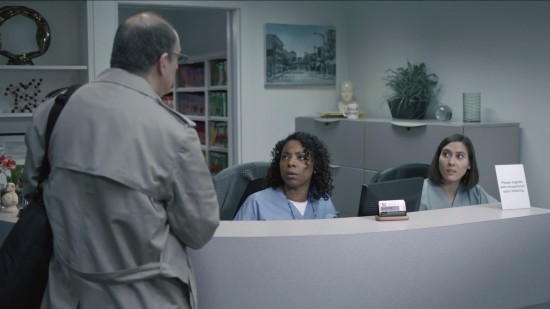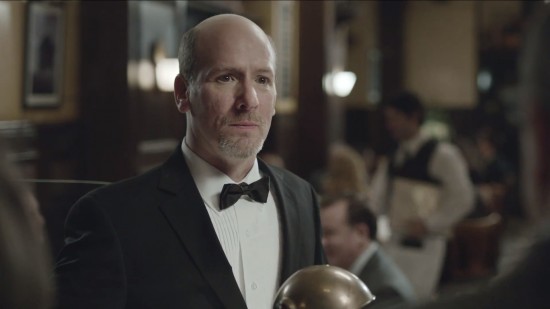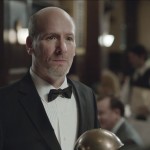 AdWeek and Harris recently released a poll asking those not involved in the advertising trade what they thought of advertising’s “relevancy.”
AdWeek and Harris recently released a poll asking those not involved in the advertising trade what they thought of advertising’s “relevancy.”
The results show that most find that our jobs, as a whole, are rather irrelevant.
Advertising’s down, no doubt, and now Adweek’s heaping salt on the wound!
Well, Mr. and Mrs. America, let’s look at a life without advertising. A life of relevance.
 First of all, without advertising, we would not have free access to television. Advertisers in essence pay for the shows we watch by running commercials. By the same logic, the web in that state would not be as comprehensive as the one we experience now. Radio would be a paid service with subscribers. Programs and shows with relatively lower ratings would be immediately slashed since they would no longer be able to support themselves.
First of all, without advertising, we would not have free access to television. Advertisers in essence pay for the shows we watch by running commercials. By the same logic, the web in that state would not be as comprehensive as the one we experience now. Radio would be a paid service with subscribers. Programs and shows with relatively lower ratings would be immediately slashed since they would no longer be able to support themselves.
The cultural art form of advertising would be lost. The circle of life would be disrupted. Just as life influences advertising, ads influence culture.
Without advertising, creatives would be cubicle-bound and non-imaginative. Serious. Boring. Sex would not sell, and neither would honesty. No one would fight for the cause. PETA would consist of two guys fighting for animal rights, and no one would care. Animals wouldn’t be cool to wear. Or not wear. Or own. Times Square would be dimly lit. Your favorite beer would be just “BEER,” as the term ‘generic’ would dominate store shelves. Color would be sparse. Trendsetters would be trend-less. No brands, no logos, no icons or spokespeople. No sexy models, sexy shows, or suggestive commercials. We wouldn’t know who to vote for, or why. Four hour erections? Who’d need the pills, let alone use them? No body-image, no silicone implants, no tummy-tucks. No Jon & Kate. Michael Jackson would just be another singer. No Hollywood trailers, stars, starlets, tramps, red carpets, or blockbuster openings. No E! TV, no TMZ. No Paris, Lindsay, Nicole, or reality TV. No Tila Tequila.
No PSA’s warning that your brain on drugs was scrambled. Or that kids shouldn’t smoke crack and that crack kills. Rather than axing the marketing budget first, corporations would axe employees. And that would be just fine, because there would be no PR effort, no big news story, therefore no downside.
Life would go on, but it would be bland and tasteless. Twitter, Facebook, YouTube and MySpace: no need for them.
Take a picture of the Cold War-era Russia and apply it to a life without advertising. Cold. Drizzling. Muddled.
The link to this study is now unavailable. Was the issue so unimportant that Adweek pulled the article? Or was the study published on the wrong day?
Luckily, I printed it:
In an AdweekMedia/Harris Poll last month, respondents were given a chance to say they don’t feel strongly about the industry one way or another, and nearly half of them took it. Asked to characterize their overall impression of “the advertising industry in general,” 47 percent said it’s “neither negative nor positive.” Predictably, those with a negative view of the business (9 percent “very,” 28 percent “somewhat”) outnumbered those with a positive view (2 percent “very,” 15 percent “somewhat”). (The total exceeds 100 percent due to rounding.)
If such numbers count as not-so-bad news for the ad business, responses were less positive on the question of whether consumers find advertising relevant to their lives (”By relevant,” Harris told respondents, “we mean how it connects to things that are ongoing in your daily life”). Given the effort put into aiming the right ad at the right target, the numbers here were pretty lackluster. Eight percent of respondents said advertising is “very relevant” to their lives, and 42 percent said it’s “somewhat relevant.” Thirty-two percent termed it “not that relevant” and 14 percent “not at all relevant,” with the rest unsure.
Can you say “OUCH!”?
Jeff Louis: Strategic Media Planner, Project Manager, and New Business Account Coordinator. His passion is writing. Reach out and touch him: www.linkedin.com or www.twitter.com.























 Advertising jingles are something consumers love to hate and hate to love. We hum them at bus stops and sing them in the shower. Sometimes (when done correctly), we even associate the correct brand with the right emotion every time we begin into its corresponding tune.
Advertising jingles are something consumers love to hate and hate to love. We hum them at bus stops and sing them in the shower. Sometimes (when done correctly), we even associate the correct brand with the right emotion every time we begin into its corresponding tune. For weeks now, my old Creative Director Andrew Schmeling has greeted his IM buddies with the following statement: “Is it compellevant?” (Being a Creative Director, he gets to make statements, not ask questions.) However, each time I sign on, I’m reminded this neologism serves as a portmanteau for two key ingredients of great ads: They’re both compelling and relevant. As we’re all subjected to daily, there are far too many pellets of capitalism that are only one or the other. You’re talking cultural milestone when you find one with both.
For weeks now, my old Creative Director Andrew Schmeling has greeted his IM buddies with the following statement: “Is it compellevant?” (Being a Creative Director, he gets to make statements, not ask questions.) However, each time I sign on, I’m reminded this neologism serves as a portmanteau for two key ingredients of great ads: They’re both compelling and relevant. As we’re all subjected to daily, there are far too many pellets of capitalism that are only one or the other. You’re talking cultural milestone when you find one with both. More recently, TBWA/Chiat/Day’s tragicomic
More recently, TBWA/Chiat/Day’s tragicomic 


 I was speaking with a co-worker today and we began talking about how, with the recent major decrease in the economy and spending, companies have stopped using their employee’s brains and are doing the bare minimum to keep companies afloat. This is probably the worst idea companies have ever had (and that’s saying something).
I was speaking with a co-worker today and we began talking about how, with the recent major decrease in the economy and spending, companies have stopped using their employee’s brains and are doing the bare minimum to keep companies afloat. This is probably the worst idea companies have ever had (and that’s saying something). After Cannes and all the recognition many commercials and agencies have received, I feel it’s only fair to nominate five commercials that are on the other side of the spectrum. Usually, I like to write about advertising commercials or campaigns that are noteworthy, but lately, there seems to be a lack of stellar campaigns (besides the few I’ve outlined in
After Cannes and all the recognition many commercials and agencies have received, I feel it’s only fair to nominate five commercials that are on the other side of the spectrum. Usually, I like to write about advertising commercials or campaigns that are noteworthy, but lately, there seems to be a lack of stellar campaigns (besides the few I’ve outlined in 
 First of all, without advertising, we would not have free access to television. Advertisers in essence pay for the shows we watch by running commercials. By the same logic, the web in that state would not be as comprehensive as the one we experience now. Radio would be a paid service with subscribers. Programs and shows with relatively lower ratings would be immediately slashed since they would no longer be able to support themselves.
First of all, without advertising, we would not have free access to television. Advertisers in essence pay for the shows we watch by running commercials. By the same logic, the web in that state would not be as comprehensive as the one we experience now. Radio would be a paid service with subscribers. Programs and shows with relatively lower ratings would be immediately slashed since they would no longer be able to support themselves.